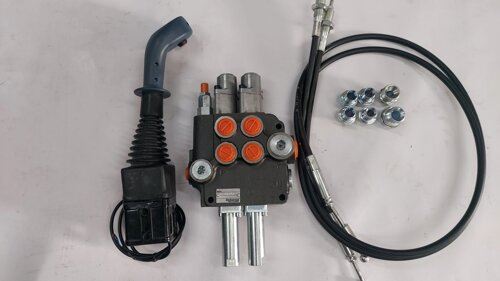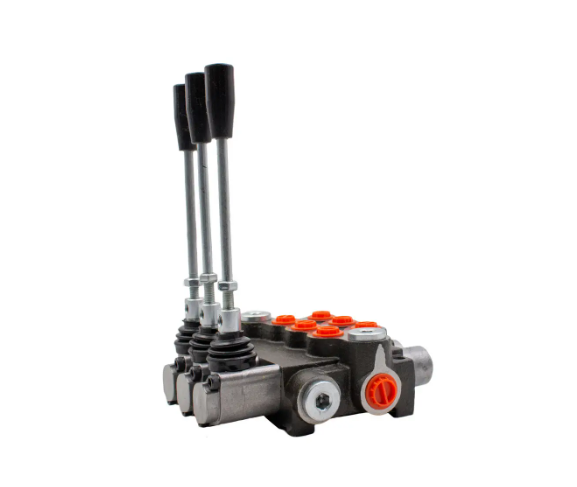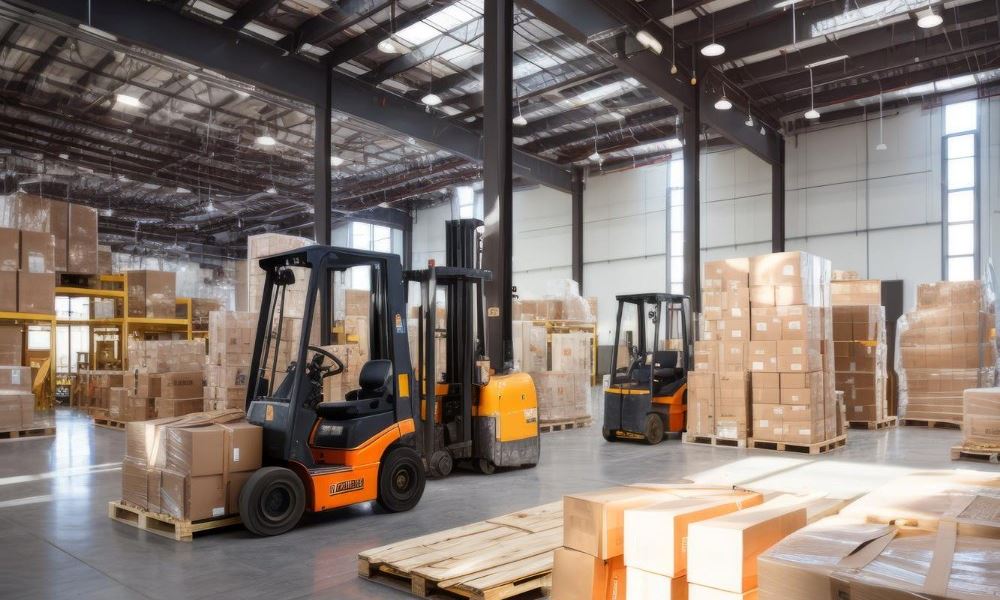Hydraulic valves for forklifts: the role and maintenance of a key control element
The hydraulic distributor is a critical component of a forklift, responsible for controlling the movement and precision of attachments. They allow operators to efficiently lift, lower and tilt loads, ensuring safety and efficiency.
What is a hydraulic distributor and why is it needed in a loader?
The hydraulic distributor is an integral part of any hydraulic drive of modern loaders. It is designed to change the characteristics of the flow of the working fluid in the system from the hydraulic pump to the hydraulic cylinder.
The device regulates the flow by controlling the pressure, direction and speed of the fluid in the system. The accuracy of lifting and tilting maneuvers, ensuring uninterrupted operation, depends on it. By controlling the device, the operator sequentially turns on the necessary mechanisms of the loader.
Types of hydraulic distributors for loaders
Several types of distributors are used in forklifts.
Structurally, the following types of hydraulic distributors are distinguished:
- Spool valves – are characterized by flexible control with the ability to smoothly adjust flows.
- Crane valves are simple, consume less hydraulic fluid compared to spool valves.
- Valves are more reliable than spool valves and are characterized by precise control.
Valve designs are monoblock and sectional. Sectional hydraulic valves consist of unified parts – sections. By assembling a structure from a certain number of modules, devices with different characteristics are created. Sectional layout increases maintainability, as it allows replacing a single section.
The monoblock layout means that all spools and valves are located in one housing.
How to choose a hydraulic distributor for your forklift?
Distributors are the most expensive and relatively technically complex products in the entire hydraulic drive in relation to pumps and hydraulic cylinders. Only the right choice of hydraulic distributor for a loader guarantees efficiency and safety of operation.
When purchasing, the following technical specifications should be taken into account:
- Compatibility: Make sure the unit meets the hydraulic system pressure and flow specifications.
- Load capacity: Choose a device that can handle the maximum load and hydraulic requirements of the forklift.
- Specific requirements Find out at what ambient and oil temperatures the unit maintains its performance, what fluid viscosity is required.
Be sure to consider the dimensions, method of connection to the system, and control to avoid installation problems. Choose hydraulic distributors from reliable manufacturers to minimize the risk of malfunctions.
It is recommended to consult a professional supplier such as Forklift Service to ensure that the distributor is selected correctly.
Maintenance and repair of hydraulic distributors
Maintenance consists of regular inspections for signs of hydraulic fluid leaks, which may indicate wear or damage to the unit. Pay attention to the quality of the fluid: contaminated fluid can lead to failure of the hydraulic unit.
The most common breakdowns are electromagnets, spools, and return springs. The production of seals is also the most common problem. Such elements are replaced together with the replacement of the hydraulic fluid.
Forklift Service will help with repairs, providing comprehensive services with on-site visits to the customer: diagnostics, selection of spare parts. Spare parts for forklift hydraulic distributors and work are guaranteed.


